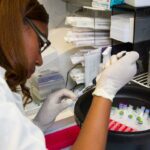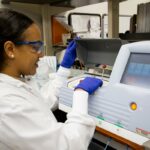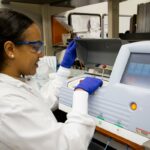The essence of life is encoded in the double helix structure of deoxyribonucleic acid (DNA). This molecule, with its intricate twists and turns, carries the genetic instructions used in the growth, development, functioning, and reproduction of all known organisms. Genetic engineering, a fascinating field of science, has harnessed the power of DNA, enabling scientists to manipulate it to achieve desired traits. This article delves into the mechanisms that manipulate DNA in genetic engineering, offering a comprehensive understanding of this intriguing scientific domain.
Understanding the Basics of Genetic Engineering
Genetic engineering, also known as genetic modification, is a process that alters an organism’s genetic material to achieve desired traits. It involves the direct manipulation of one or more genes in an organism’s DNA. The role of DNA in genetic engineering is paramount, as it is the ‘blueprint’ that guides the development and functioning of all organisms.
Genetic engineering manipulates DNA to introduce, enhance, or suppress specific traits. For instance, it can make crops resistant to pests, enhance the nutritional value of food, or even cure genetic disorders. The science behind genetic engineering is both complex and fascinating, involving a range of tools and techniques that manipulate DNA.
The Tools of Genetic Engineering: What Manipulates DNA?
The manipulation of DNA in genetic engineering involves several key tools, including restriction enzymes, DNA ligase, and the polymerase chain reaction (PCR).
Restriction Enzymes
Restriction enzymes, also known as molecular scissors, are proteins that cut DNA at specific sequences. They are crucial in genetic engineering as they allow scientists to cut and remove specific sections of DNA, enabling the introduction of new genetic material.
DNA Ligase
DNA ligase is another vital tool in genetic engineering. It acts as a molecular glue, joining DNA fragments together. After restriction enzymes cut the DNA, DNA ligase is used to attach the desired gene into the DNA sequence.
Polymerase Chain Reaction (PCR)
PCR is a technique used to amplify a single or few copies of a piece of DNA, generating thousands to millions of copies of a particular DNA sequence. It is crucial in genetic engineering as it allows scientists to create enough genetic material for further manipulation and analysis.
The Process of Genetic Modification
The process of genetic modification involves several steps, starting with the identification and isolation of the gene of interest. This gene is then inserted into a vector, typically a plasmid, which is used to introduce the gene into the target organism. The modified organism is then grown and tested to ensure the successful incorporation and expression of the new gene.
Single Base Pair Alteration in Genetic Engineering
Single base pair alteration, also known as point mutation, is a type of genetic modification where a single base pair in the DNA sequence is changed. This can have a significant impact on the organism, as even a single base pair change can alter the protein produced by a gene, leading to different traits.
DNA Deletion in Genetic Engineering
DNA deletion is another type of genetic modification where a section of DNA is removed or deleted. This can be used to eliminate undesirable traits or to study the function of a specific gene.
DNA Addition in Genetic Engineering
DNA addition involves adding a section of DNA into an organism’s genome. This is commonly used in genetic engineering to introduce new traits into an organism, such as pest resistance in crops or the production of insulin in bacteria.
Applications of Genetic Engineering
Genetic engineering has a wide range of applications across various fields. In medicine, it is used to produce insulin, human growth hormones, and vaccines. In agriculture, it is used to enhance crop yield, improve nutritional content, and develop pest-resistant crops. In environmental science, it is used to create biofuels and to clean up pollutants.
Ethical Considerations in Genetic Engineering
While genetic engineering holds great promise, it also raises several ethical issues. These include concerns about the potential risks and unforeseen consequences of genetically modified organisms, the moral and ethical implications of altering life, and issues of access and equity.
Future Perspectives on Genetic Engineering
The field of genetic engineering is rapidly evolving, with new techniques such as CRISPR-Cas9 offering unprecedented precision and efficiency in gene editing. As our understanding of genetics continues to grow, the potential applications of genetic engineering are virtually limitless.
Conclusion
The mechanisms that manipulate DNA in genetic engineering are complex and powerful, offering the potential to reshape the world as we know it. As we continue to explore and understand these mechanisms, the future of genetic engineering holds great promise.
References:
- Alberts, B., Johnson, A., Lewis, J., Raff, M., Roberts, K., & Walter, P. (2002). Molecular Biology of the Cell. New York: Garland Science.
- Brown, T. A. (2002). Genomes. Oxford: Wiley-Liss.
- Watson, J. D., Baker, T. A., Bell, S. P., Gann, A., Levine, M., & Losick, R. (2004). Molecular Biology of the Gene. San Francisco: Pearson.








